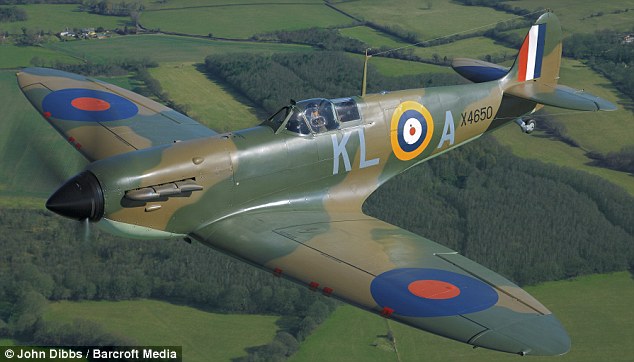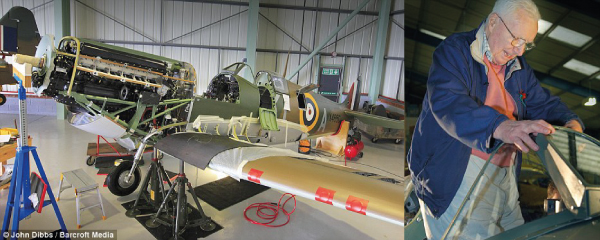Spitfire Rebuilt At Biggin Hill
Posted by flysynergy on Apr 18, 2012 in GA News | Comments Off on Spitfire Rebuilt At Biggin Hill The Mk1 Supermarine Spitfire, one of just three still in airworthy condition, has been completely rebuilt at Biggin Hill airfield following an investment of nearly 8 years and £3 million.
The Mk1 Supermarine Spitfire, one of just three still in airworthy condition, has been completely rebuilt at Biggin Hill airfield following an investment of nearly 8 years and £3 million.
The aircraft had originally been submerged in a North Yorkshire river after it's pilot, then 20 year-old Howard Squire, bailed out in 1940 following an accident during a training exercise. When the water level fell during the drought of 1976, the wreckage was then discovered and ended up in the hands of a North Yorkshire collector.
Peter Monk, a former commercial pilot who runs The Spitfire Company at Biggin Hill, came across the legendary fighter in 2004 when he exchanged it for a truckload of Avro Lancaster bomber parts.
Mr Monk explains, 'I was on the search for Spitfire parts, so I went to see this chap in Yorkshire.
He mentioned he had some wreckage in store and I was taken aback by how much there was of it.
There was the fuselage, engine, propeller and a third of each wing. There was more than enough to start a restoration.'
Joined by a team of around 30 dedicated restorers, Peter Monk was kept on to supervise the restoration. 'The whole point was to use as many original parts as possible,' he says. 'It would have been easy to get these parts made new, but I would rather get in the car and drive 100 miles if an original part exists. It's a testament to how good they were in the first place - that so much effort was put into the original parts.'

During the restoration, the Spitfire was brought by Texan businessman Dan Friedkin. The purchase makes Dan (46) in conjunction with his billionaire farther, Tom, the owner of two airworthy Mk1s - the final one being owned by the Queen.
The aircrafts original pilot, Howard Squire - who was shot down near Calais in February 1941 and spent more than four years as a PoW - was reunited with the plane two years ago, months before his death at the age of 90.
Pilot Paul Bonhomme had the honour of flying the aircraft on 9 March 2012 after its restoration and describes the experience. 'Flying it is a bit nerve-racking as you are taking a priceless piece of history into the air. It's like driving down the High Street in a Ford Model T. But it flies brilliantly. My strongest feeling is to give thanks to those guys who were there to fly these in the first place, so we can do this now.'
